



No referral necessary.
We are available to help people from any community or city.
*Registered with NIHB and Victim’s services*
HOURS
Monday 9-5
Tuesday 9-5
Wednesday 12-8
Thursday 12-8
Friday 9-5
Saturday 9-2
© Copyright 2023 | All rights reserved | Created by unleashyourinnere – creator of custom websites
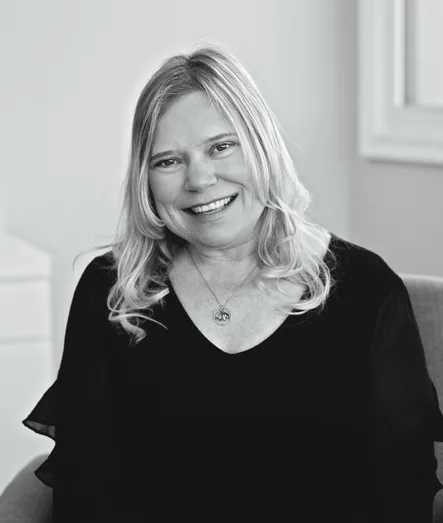
I am a Registered Psychotherapist with over 20 years of clinical counselling experience. I work from a client centred, strength-based approach. I believe that healing encompasses all elements of body, mind and spirit and therefore there is greater benefit in holistic healing.
I specialize in assisting clients to recognize and embrace their own resilience to adversities through a wide range of evidence-based treatment modalities. I have worked extensively with adults and children experiencing depression, anxiety, trauma and substance abuse disorders. I also work with family members to provide understanding and support when dealing with an individual who may be struggling to cope. Lives can be transformed through self-discovery, making connections, understanding and appreciating each person’s unique journey thorough life experiences.
I also run one of the equine programs for Brant Mental Health Solutions and enjoy helping people heal and find peace through working with my horses.
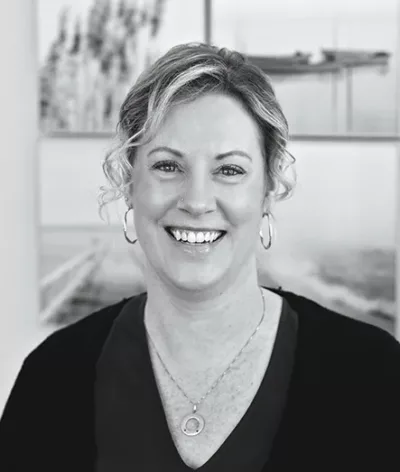
“Finding yourself is not really how it works. You aren’t a ten-dollar bill in last winter’s coat pocket. You are also not lost. Your true self is right there, buried under cultural conditioning, other people’s opinions, and inaccurate conclusions you drew as a child and adult that became your beliefs about who you are. ‘Finding yourself’ is actually returning to yourself. An unlearning, an excavation, a remembering who you were before the world got its hands on you.” ~Emily McDowell
The quote above accurately describes much of the work I do with my clients. Keeping in mind that every client’s situation is unique and therapy modalities aren’t a “one size fits all”, I believe that often through a combination of Cognitive Behavioural Therapy and attachment theory, clients can develop an understanding of how their past impacts them in the present, and then use this knowledge to promote change in their lives. I work alongside my clients to help them identify their strengths, understand their struggles, set therapeutic goals and collaborate on ways to meet these goals. I strive to create a therapeutic relationship with my clients based on trust, safety, comfort and that is free from judgment. I believe in setting my clients up for ongoing success by supporting them in connecting with their inner resources of wisdom, knowing and strength.
Most recently, I have completed my EMDR certification and I am now able to use this modality in helping my clients work through traumatic events and experiences.

I have experience working with clients who have been affected by trauma as well as other mental health-related concerns. I have experience utilizing CBT, DBT, and trauma-informed interventions while working with family or individual therapy. I am able to provide counselling services in English and Arabic.
I have completed my Master of Arts in Counselling Psychology (MACP) at Yorkville University. I received my undergraduate degree from Laurentian University, specialization in Psychology. I hold the RP(Qualifying) status with the College of Registered Psychotherapists of Ontario (CRPO). I am currently being supervised as per college guidelines.

I counsel and support individuals experiencing mental illnesses such as depression, anxiety, trauma, bipolar disorder and schizophrenia. I provide counselling and support to individuals who are seeking help for problems with substance use. I have also practiced mental health and addictions nursing for over 10 years. I hold a degree in psychology, a diploma in practical nursing, a graduate certificate in mental health nursing, and cognitive behavioural therapy.
My role as a therapist is to listen, empathize with, encourage and help to empower clients as they work through problems associated with depression, anxiety, trauma and other mental health/addiction issues. My goal is to support individuals as they progress through their wellness journey to manage harmful emotions and behaviours, or difficulties coping with traumatic experiences or events.
I can help you understand the behaviours, emotions, and ideas that may be behind your illness/distress and help you find ways to change them. By identifying stressful life events such as an illness, divorce, or childhood trauma that may be at the root of your problems, you can learn appropriate interventions to help you regain a sense of control and pleasure in life, learn healthy ways to address problems and learn how to work with others to resolve conflicts.
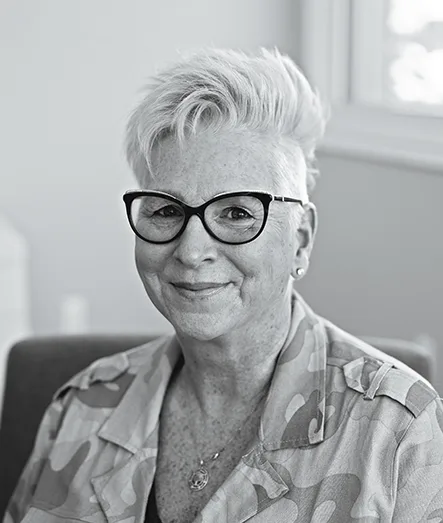
I have experience providing counselling to individuals who struggle with Chronic Pain, Anxiety, Depression, Postpartum Mood Disorder, coping with Chronic Illness and Injuries, Anger Management, Adjustment, Loss, Grief, Post-Concussion Syndrome, Acquired Brain Injury, and Trauma. My background empowers me to be an effective social worker who is comfortable counseling diverse groups of people.
I believe in the value of the therapeutic relationship as a foundation for change. I embrace the philosophy of an eclectic approach while providing a safe, non-judgemental, and emotionally understanding atmosphere to support clients in their own personal growth. Through the counselling process, I will guide you in identifying unique personal goals and encourage you to build upon your personal strengths and resources to help you navigate life’s struggles, and live your best life.
Most recently, I have completed my EMDR certification and I am now able to use this modality in helping my clients work through traumatic events and experiences.
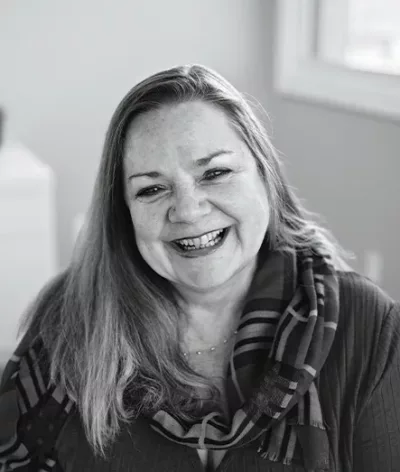 Sharon Walker, MSW, RSW
Sharon Walker, MSW, RSW
I am a registered social worker with over 30 years of experience in the mental health field and I have had the pleasure of collaborating with individuals and families across the life span.
As a clinician I support the counselling process through cultivating a safe, non-judgmental space that encourages a therapeutic relationship to co-create goals that have meaning and value to improve my client’s life journey.
I have experience providing counselling to individuals who struggle with Anxiety, Depression, grief and loss, trauma, addictions, compassion fatigue, chronic conditions and new diagnosis, separation, mood dysregulation (anger management, stress management, behaviour/transition challenges in children) and attachment disruptions.
My practice is relationally based, family centred, anti-oppressive and focused on resilience in a holistic way.
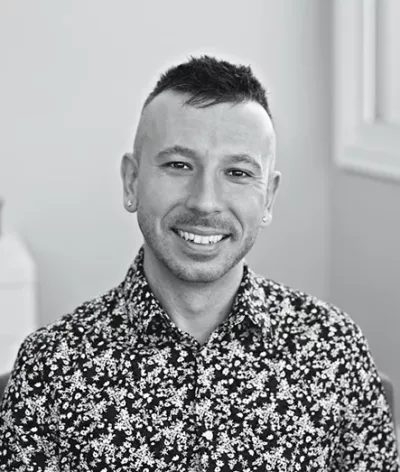 Jordon Iorio Hons. BA, RSW
Jordon Iorio Hons. BA, RSW
I was born and raised in Brantford and I have dedicated my career to helping people in this community overcome life’s challenges and lead happier and healthier lives. I aim to bring my personal and professional backgrounds together. My experience with overcoming personal struggles as a young adult, coupled with my education and passion for helping’ helps me bring a unique and dynamic skill-set to the office.
I use a holistic, solution and client focused approach in helping clients, and organizations, not only achieve goals and make positive changes, but learn how to better navigate life’s obstacles.
As an ‘Empath,’ I treat each client as an individual and tailor my approach to them as exactly that, individually, looking at their personality, how they ‘operate,’ their self-narrative, their current relationships, communication style(s), feelings and behaviours.
Jordon has a background as a clinician (counsellor/clinical therapist), and has also worked in vocational rehabilitation and career coaching/consulting. He holds a Master of Arts in Counselling from Yorkville University and a Bachelor of Arts (Hons. Double Major – Social Sciences) from Wilfrid Laurier University. Jordon has recently become registered with the Ontario College of Social Workers and Social Service Workers (OCSWSSW) and is now practicing as a registered social worker (RSW). Jordon enjoys working with those experiencing high levels of stress, anxiousness/nervousness, low mood, interpersonal issues and difficult life transitions.
Jordon offers the following services and modalities to his clients (Ages 16+) and organizations:
 Christine Bibby, B.S.W., M.S.W., R.S.W.
Christine Bibby, B.S.W., M.S.W., R.S.W.
I’m a Registered Social Worker who brings over 30 years of experience supporting children, youth, adults, and families within hospital, community, and school settings. My passion has always been in supporting and collaborating with people to work through life’s challenges with dignity, self-respect, and empowerment. I’m thrilled to be a member of the dynamic team at Brant Mental Health Solutions.
Both my life and social work practice embody things I value: the significance of the brain-mind-body relationship and what this means for understanding our own behaviour and that of others; the power of human connection, language, and elements of nature; and the amazing capacity of human beings to learn, adapt, grow, and heal at any age and stage of life!
As a therapist my job is to find and co-create solutions with you that will help you live your best life. While honouring who you are, as an individual, couple, or family, I will help you to recognize and shift the patterns of thinking, feeling, and behaving that are not serving you well. The therapeutic approach is both insight and action oriented, and incorporates evidence-based, cognitive, holistic, and somatic (mind/body) methods. Whatever your goals for therapy are, improving your relationship with yourself and others will be a natural outcome of your unique process.
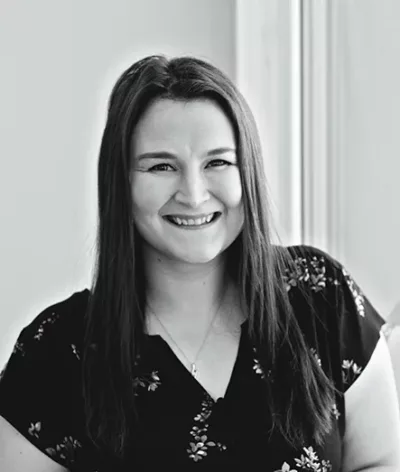 Brianna Kerr, RSW
Brianna Kerr, RSW
I strongly believe that positive and caring adults can make a big difference in a child’s life. This belief is at the core of the work I do to help children/youth (and all individuals) feel safe, supported, heard, and understood.
I am a registered social worker with over ten years of experience working with children and youth in a variety of settings. I work from a strengths-based, trauma-informed, and eclectic approach to meet individuals where they are at, as well as walk along their journey with them. This includes providing psychoeducation, talk therapy, distress tolerance skills, mindfulness, and creative interventions to suit the individual’s unique needs. My areas of practice have included domestic violence, trauma, and anxiety.
I enjoy ongoing learning and adding tools to her practice, when I am not learning you will find me reading, supporting local stores/restaurants, paddleboarding, or near a body of water.
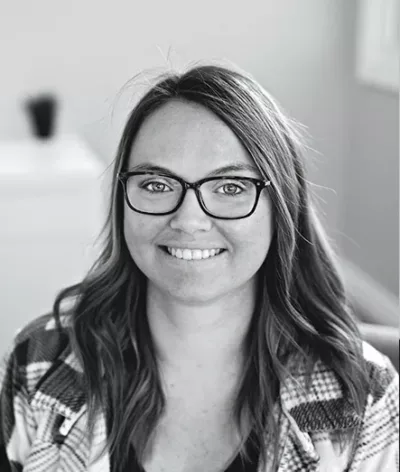 Danielle Vanderpost, RSW
Danielle Vanderpost, RSW
I have 6 years of experience in the Social Services sector where I have worked with individuals of all ages. I have a passion for helping people heal and become their best possible self.
“Sit with animals quietly and they will show you their hearts, sit with them kindly and they will show you yours.”
Are you someone that has tried therapy, but just haven’t been able to make a good connection or felt like that wasn’t the right setting? I’m with you. With equine assisted learning you will work with horses in different settings will allow individuals of all ages to develop life skills through interactions with horses. Interacting with horses can improve an individual’s health and well being. So, if you are looking for something different this may be the right fit for you.
 Daniela Switzer, MA, C.PSYCH
Daniela Switzer, MA, C.PSYCH
I earned my Master of Arts degree in Counselling Psychology from the Adler School of Professional Psychology in Chicago, after going back to school at age 35. Since that time, I have accumulated a great deal of experience in assessment, conducting a variety of psychological assessments to people of all ages.
I previously worked within the school system providing psychological services to students and educators to ensure children meet their full potential. As a registered School Psychologist in Ontario, I primarily provides assessments for children and adults to assess for Neurodevelopmental and Mood disorders which may be impacting an individual’s ability to be successful academically. While my clients are often children, I also work with adults, young and old, who are attempting career changes or looking to upgrade skills and require supports academically to be successful learners.
I believe in lifelong learning but also understand that not everyone learns the same and that formal education can be so difficult for some that they avoid it at all costs. My goal is to help make education a good experience so that people can become the best version of themselves.
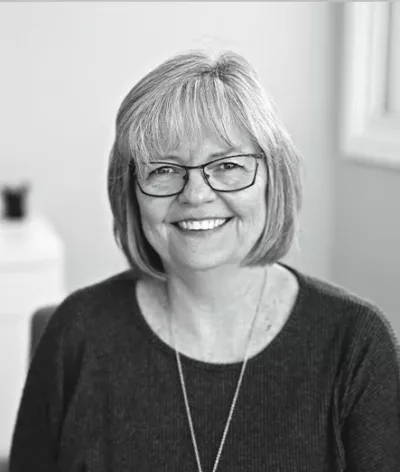 Tammy Adams
Tammy Adams
When I talk about ‘grief’, I do so from a place of personal experience. I had a challenging childhood. The patterns that I learned in childhood, I went on to replicate in my working life. Trust me, those sentences allude to decades of carrying the real burdens of grief. There came a point when I had no more interest in continuing to live with insecurities, sadness and grief. I took these challenges and did two things:
The first is that I became a life-long searcher, looking for the tools that would help me move into a happier, more positive, and empowered life.The second move was to create a career in grief counseling that nurtured others as they tried new avenues.
For over 30 years, I have taught children and adults, provided education supports, training and coaching in the corporate and educational worlds. You could say that my focus has been on “helping people move towards their desired futures” through grief therapy.
The great thing about us as humans, is that we keep trying to ‘finish the story’. You will know when you find yourself in the same situation over and over again … and you just don’t know how to stop it. Many of my clients share the feeling of “being stuck”. My ultimate goal was to find a way to deal with life more effectively, for all of us.
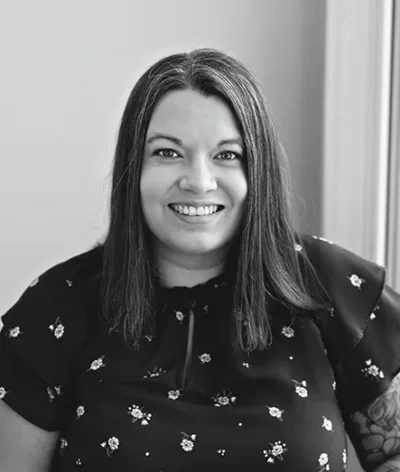 Jade Bates, RMT
Jade Bates, RMT
I am a Registered Massage Therapist who recently joined the team at Brant Mental Health Solutions. I am comfortable treating people of all ages with a variety of conditions. Whether you are looking for support with pain/injury or looking to relax and maintain your health, I can help! Outside of work I enjoy camping, teaching massage students at Mohawk College and spending time with my pets!
 Caitlin Schneider
Caitlin Schneider
Caitlin is one of our administrative assistants and our holistic nutritionist.
Caitlin joined us in early 2021 and has been a wonderful addition to the team. She loves interacting with the clients and is passionate about fitness and nutrition. We are glad she is able to fulfill both of these roles at the office.
She is a recent graduate of a holistic nutrition program and is able to help people of all ages reach their health goals. When she isn’t at work, Caitlin loves spending time with her family and she is also heavily involved with the community gardens, helping to teach people how to grow their own food and helping to feed the Brantford community!
 Dr. Crysana Copland
Dr. Crysana Copland
I am a board certified Naturopathic Doctor and I graduated from the Canadian College of Naturopathic Medicine in 2020 with a Doctor of Naturopathy.
My clinical interests include performance in sport and life, concussion, and chronic pain, along with many other conditions. I use nutrition and lifestyle medicine, botanical herbs, nutraceuticals, acupuncture, and more in my treatments.
I am an avid hockey fan and I am passionate about the growth of women’s sports. In my spare time, I can often be found hanging out with my dogs, reading, or diy crafting.
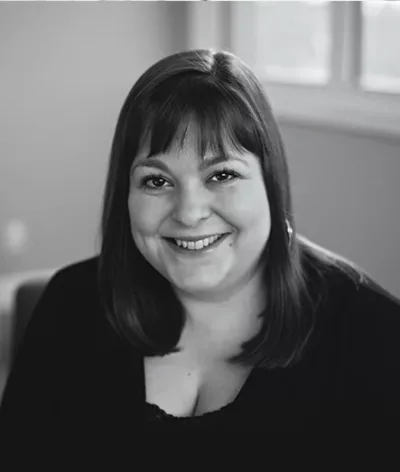 Amy Dougley
Amy Dougley
My passion for mental health began after one of my children was diagnosed with a mental health disorder.
After seeing firsthand how devastating it can be for families and then realizing how underserved Brantford and Brant County was in terms of mental health care, I became determined to create a safe and non-judgmental space for people of all ages to go for help.
It is my passion and goal to hire the most qualified and professional therapists and to educate the community on how to cope with mental health disorders and how to care for a loved one with a mental health disorder.
I am currently on the board of directors for H.O.P.E Brant, a local organization that provides free peer support services and other supports through the Canadian Mental Health Association and I also work hand in hand with various other charities and organizations around the city that support children, families and mental health.
I love this community and remain dedicated to shining a light on mental health and helping support those who are struggling.
When I am not at work, I enjoy spending time with my husband and 3 children!
 Emily Green
Emily Green
My passion for mental health began after my own struggles with mental health during my teen years. Since then, I have always wanted to help others and open up conversations concerning mental health.
I personally know how nerve-wracking it can be to take the first step towards help, and I hope that everyone will have a positive experience speaking to anyone at our office and that they will be met with kindness and provided a safe space to start their mental health journey.
When I am not working, I am curled up in bed reading a book, singing really loudly with my headphones in or adventuring with my husband.
 Caitlin Schneider
Caitlin Schneider
I was born and raised in Brantford where I still currently live with my husband and step-son.
I have had my own personal mental health struggles and have watched family members struggle too, which I feel helps me to connect with clients in a non-judgmental and understanding way. I always strive to create a safe and accepting community for everyone.
It is one of my goals to help de-stigmatize the negative talk around mental health and shed light on the growing issue and lack of support for suffering individuals. I am excited to be part of Brant Mental Health Solutions and work towards this goal.
Everyone deserves to be happy and find peace, and I enjoy being a part of a company that strives to help their clients find this.
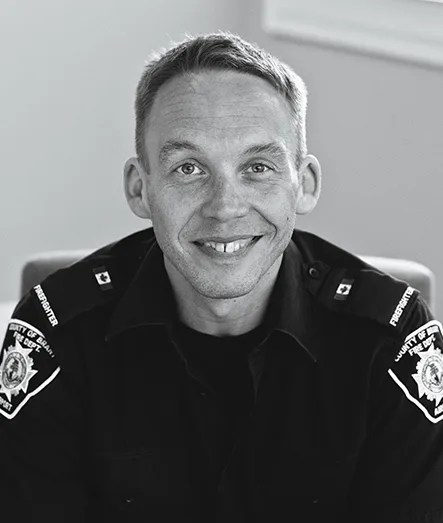 Bill Dungey, RSW
Bill Dungey, RSW
I am a Registered Social Service Worker, Volunteer Firefighter, Father and Husband from Brantford, Ontario. Some of my passions include teaching martial arts and a handful of other hands-on hobbies. I am also the founder of SIXFEET, a not for profit toward bringing actionable resilience skills to first responders.
I will be running a free men’s group this Spring/Summer for Brant Mental Health Solutions and I look forward to creating other programs to help those in our community.
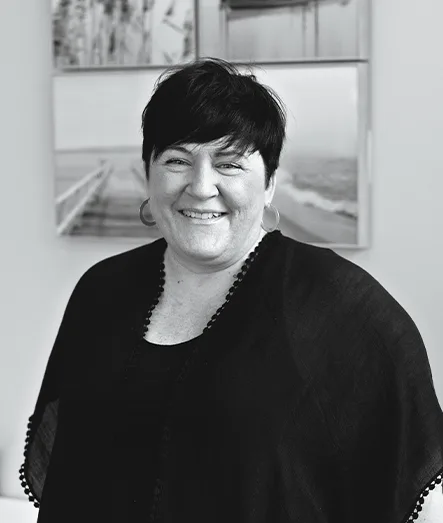
I am a McMaster University Bachelor of Social Work graduate and have spent several years working within the shelter system, supporting women and children experiencing family violence and homelessness. Alongside this, I have been privileged to work with women for over a decade who have been challenged with postpartum depression and/or anxiety. I have also participated in research through McMaster University and have extensive experience as a group facilitator.
As a guest speaker, I have been actively involved in raising awareness about the stigma that accompanies postpartum depression and anxiety. I have been fortunate enough to support individuals from various walks of life, from young adults to seniors, to members of the queer community, while engaging a trauma-informed approach and recognizing that no two individuals are the same.
As we are often at our most vulnerable when attending therapy, I believe providing a safe space for clients to explore their issues is essential. I have experienced counselling and recognize the importance of building a trusting relationship together. As a human being, I do not always have the answers, but I will make it my goal to acknowledge your strengths towards building the life you want.
My practice focuses on supporting clients with anxiety, depression, postpartum depression and anxiety, illness anxiety disorder, domestic violence, 2SLGBTQIA community support, and trauma. Cognitive Behavioural Therapy (CBT), Acceptance and Commitment Therapy (ACT), and Narrative Therapy are some of the modalities I implement.
Outside work and school, I enjoy reading fiction (especially Harry Potter and Outlander!), socializing, powerlifting, singing (dream job other than a social worker- Broadway singer!), and cheering my boys on at their baseball games.
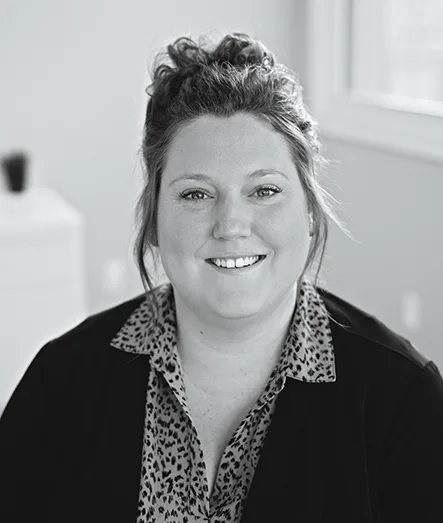
Hello, I’m Breanne! I am a Registered Psychotherapist (Qualifying), completing my Masters of Counselling Psychology Degree through Yorkville University. I enjoy working with children, youth, pre-teen, and teenage populations, and am dedicated to helping clients maximize their potential and reach their goals through a therapeutic lens.
Challenges that I can help clients navigate are anxiety, depression, stress, relationship issues, self-esteem, self-harm/suicidal ideation, and transitions. I tend to incorporate Cognitive Behavioral Therapy and Dialectical Behavioral Therapy into my therapy, however, I am comfortable with a variety of modalities including Narrative and Solution Focused.
I view therapy as a collaborative process, and meet each client where they are at on their journey. I thoroughly enjoy meeting new people and would love the opportunity to connect with you to see how we can collaboratively meet your goals.

I am a registered social worker with over eight years of experience working with children, youth and adults in campground and clinical settings. Throughout each session, I incorporate tools and resources from CBT and DBT models, encouraging you through a trauma-informed and strengths-based lens. My experience includes coming alongside individuals who have expressed concerns about their mental health and experiencing depression or anxiety. I have also supported individuals who have experienced harm through domestic violence within their relationships. The goal of my practice is to meet you where you are at, honour and respect who you are and support you in shifting your thoughts, feelings and actions to support the life you want.

I believe that you are doing the best you can, that you are managing and coping in the only ways you know how, and that the ways you are responding to the world and showing up in your relationships can provide a lot of information as to what you are experiencing. I practice relational therapy because at my core I am, like all potential clients, just a human being trying to understand how to live in this world that can be challenging to navigate. I believe that my role is not to fix but to sit or be with you in your reality and to witness and validate your experience; your humanity. These places are filled with responses to feeling and emotion and I am trained to be curious about how youare relating to your environment, yourself, and to me. My belief is that when there is support for you and for how you are interactingwith the world that space can be created for understanding and movement.
I hold a BA from the University of Guelph and am a trained Gestalt Psychotherapist having graduated from The Five-Year Training Program at the Gestalt Institute of Toronto. My training in this approach has exposed me to a variety of modalities rooted in somatic experience, language of responsibility, experimentation with play, creativity, and movement. All methods of exploration are grounded in helping you have a new or deepening awareness of your processes. I have a genuine desire to listen, learn, and be present with my clients, working from moment to moment I work with individuals from age 14 and onwards, promoting a space of empathy and inclusion.My areas of experience include depression,anxiety, grief, stress, relationship issues and family conflict. I have experience supporting people who identify as members of 2SLGBTQIA+ communities, folks who experience addiction and/or who have become incarcerated due to their addiction, as well as family members and caregivers who have a loved one living with dementia and other terminal illness.
When not working I love spending time with my daughter, eating good food, and exploring all the activities our community has to offer.
